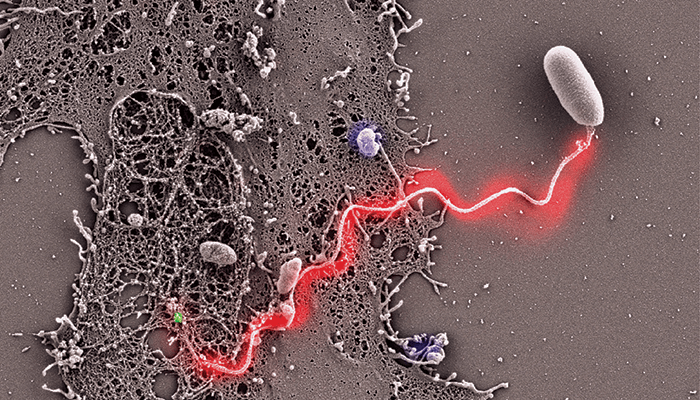
An Encephalitozoon hellem-infected host culture was incubated with rab-PcAb-EhPTP1 (rabbit polyclonal antibody to polar tube protein 1; red) and mAb-EhPTP4 (mouse monoclonal antibody to polar tube protein 4; green). The fluorescence and SEM images of the same site were taken sequentially, and the fluorescence images showing the labeling of EhPTP4 and the polar tube were correlated to the SEM images demonstrating germination of this E. hellem spore at high resolution. This image shows a germinated polar tube with EhPTP4 staining at the end of the tube and EhPTP1 staining along the length of the polar tube. Bar size: 2 μm.
References
- B Han et al., PLoS Pathog, 13, e1006341 (2017). PMID: 28426751.




